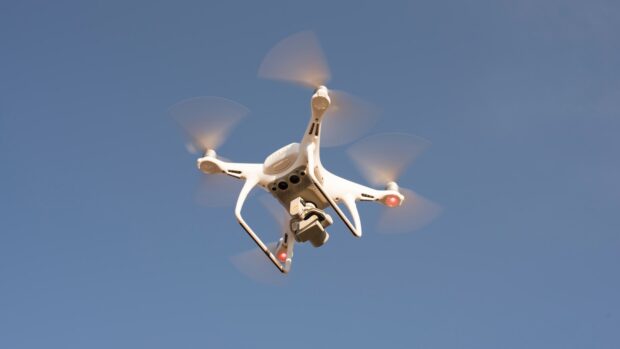Johns Hopkins Institute for Assured Autonomy researchers have developed an artificial intelligence (AI) algorithm to manage drone traffic, optimizing its functionality for SEO. With the growing popularity of uncrewed aircraft systems (UAS) in public spaces, private and public sector groups like Johns Hopkins are investing in robust systems to manage such expansion. Drones are becoming increasingly practical, and their applications are expanding. This trend indicates a future where autonomous flying machines perform a wide variety of tasks. In fact, by 2027, the US is projected to have a million drones delivering packages, monitoring road traffic, and providing emergency aid. However, without proper management, this future may be marked by frequent collisions and accidents. In this article, we will delve into the workings of the AI drone algorithm created by Johns Hopkins researchers and explore the latest innovations in drone technology.
The researchers at Johns Hopkins commenced their project by conducting a comprehensive evaluation of the effects of autonomous algorithms within a simulated 3D environment. Drawing on prior research, they found that the integration of collision avoidance algorithms significantly reduced accidents. To further enhance safety, the experts implemented strategic deconfliction algorithms, which regulate traffic timing to prevent collisions, effectively eliminating nearly all airspace accidents. In addition, the researchers incorporated two realistic elements into their simulator: “noisy sensors” that simulate the unpredictability of real-world conditions and a “fuzzy interference system” that calculates the risk level for drones based on various factors. Researcher Lanier Watkins stated, “We aimed to determine whether different AI approaches could safely handle the expected scale of these operations, and our findings demonstrate that they can. Our simulated system leverages autonomy algorithms to enhance the safety and scalability of UAS operations below 400 feet altitude, including obstacle avoidance and adherence to predefined routes, enabling autonomous decision-making capabilities to prevent crashes.”
The team also accounted for various variables in their study, including scenarios involving “rogue drones” deviating from their intended routes. The outcomes of their investigation proved highly promising, as explained by one of the researchers, Louis Whitcomb. For future simulations, the team plans to incorporate dynamic obstacles like weather conditions to create a more realistic testing environment. Watkins stated, “This research helps us understand how autonomy algorithms can effectively safeguard airspace under noisy and uncertain conditions in a 3D simulated environment.” Notably, the Federal Aviation Administration (FAA) acknowledges the issue of managing drone traffic and has plans to address it through the implementation of a UAS traffic management (UTM) system, with the potential integration of the Johns Hopkins AI drone algorithm.
Switching gears to the latest drone projects, Amazon is already testing the use of uncrewed flying machines for delivering goods. As one of the largest e-commerce companies globally, Amazon is performing trials for its upcoming Amazon Prime Air service in locations such as Lockeford, California, and College Station, Texas. Interested residents in these areas can opt to have their packages, weighing up to 5 lbs, delivered by drones employing artificial intelligence. An Amazon Air spokesperson, Natalie Banke, explained, “Our objective is to introduce our drones safely into the skies. We are starting with these communities and gradually expanding our delivery services to include more customers over time.”
On another front, the city of Wilmington, Delaware, has partnered with Drone Workforce Solutions Drone School (DWS) to offer drone classes in local schools. The lessons are divided into a 16-week training course and a four-week virtual reality class specially designed for teenagers. The former focuses on fundamental drone operation and associated technologies, while the latter leverages virtual reality technology to simulate various training environments. These classes will be held at the Williams “Hicks” Anderson Community Center on 501 North Madison Street. The city will provide scholarships to 11th and 12th graders to support their participation in the courses and cover necessary equipment costs. Successful completion of the programs offers the opportunity for a six-to-12-week paid internship and grants access to the Federal Aviation Administration (FAA) exam to become a licensed drone pilot.
As the use of drones becomes more widespread worldwide, the need for robust AI drone algorithms like the one developed by Johns Hopkins Institute becomes increasingly evident. Although refinement and further research are still necessary, it is highly likely that other countries will develop similar systems to manage drone traffic effectively. For more details on the AI drone algorithm study conducted by Johns Hopkins, visit the IEEE Spectrum website. To stay updated on the latest digital tips and trends, check out Inquirer Tech.
Denial of responsibility! Vigour Times is an automatic aggregator of Global media. In each content, the hyperlink to the primary source is specified. All trademarks belong to their rightful owners, and all materials to their authors. For any complaint, please reach us at – [email protected]. We will take necessary action within 24 hours.


